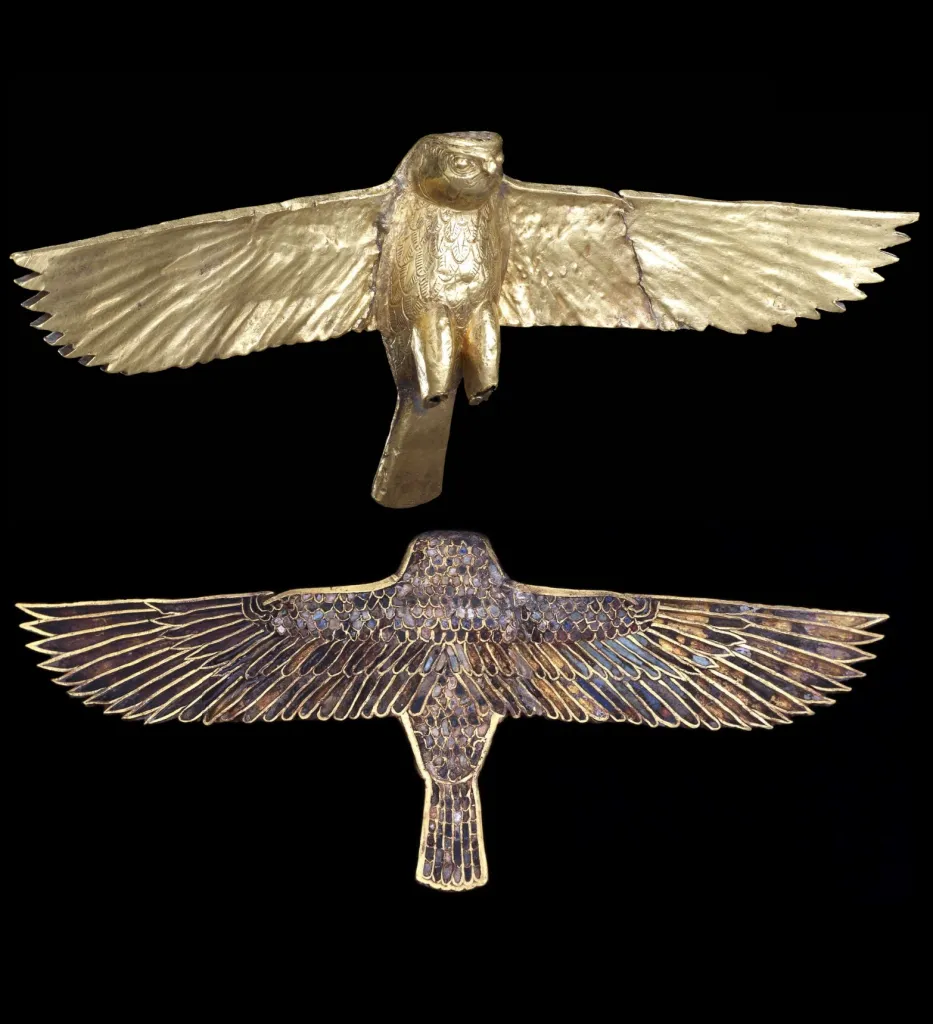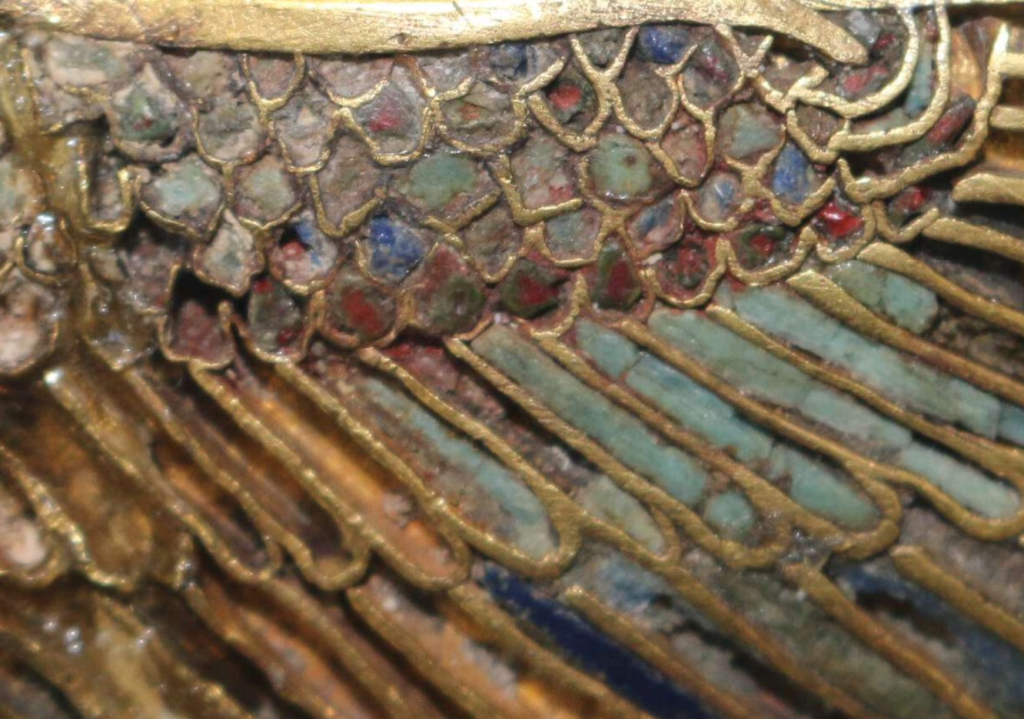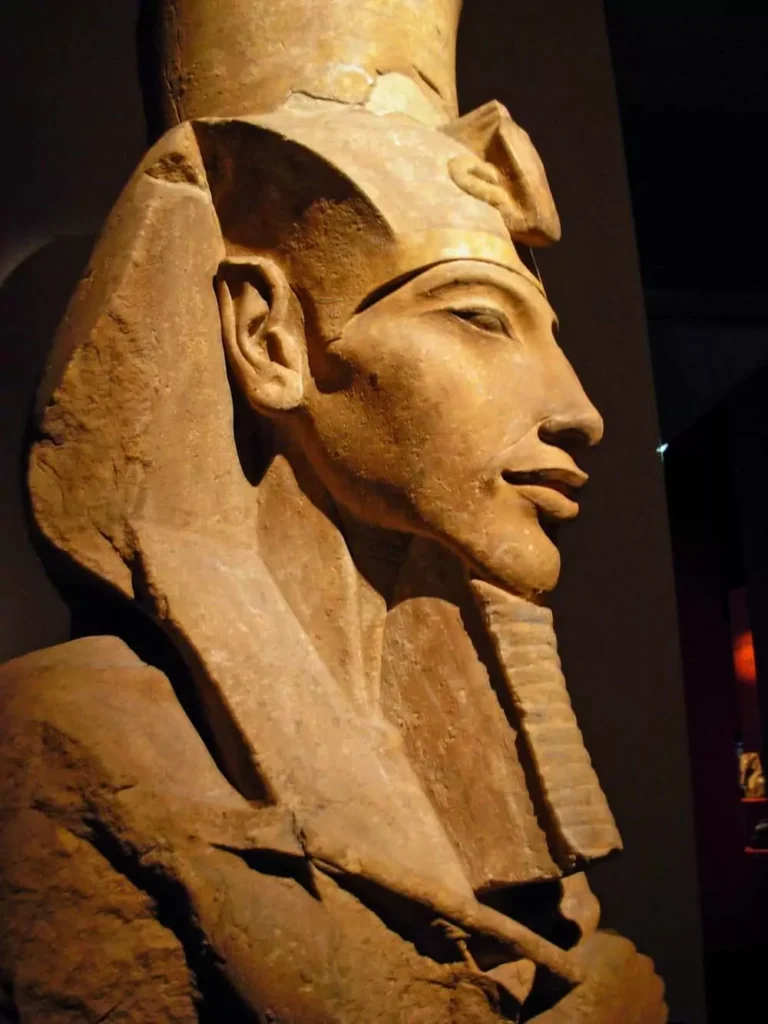Looking for a muse? Check no further. Discover the Best of Art, Culture, History & Beyond!

Horus in Flight: The Golden Falcon of the British Museum
Golden pectoral of a hawk/falcon with inlay coloured glass
Egypt, Late Period – Ptolemaic, c. 600-200 B.C.
Purchased by the British Museum via, Panayotis Kyticas (Cairo), 1923. EA57323
Measurements: Height: 5.8 cm. Length: 14.6 cm Depth: 1.4 cm
Weight: 56 grams
Dating back to approximately 600–200 B.C., this stunning gold-inlaid depiction of a falcon in flight represents Horus, one of the most significant deities in ancient Egyptian mythology. Now housed in the British Museum, this intricately designed piece is classified as a pectoral, a decorative chest ornament worn for both symbolic and protective purposes.
Although the artifact remains largely intact, it appears that the falcon’s claws are missing, as indicated by the circular sockets that would have once held them. Inlaid with multicolored glass, the craftsmanship reflects the exceptional artistry of the Late Period to Ptolemaic Period, an era during which Horus continued to be a powerful emblem of divine kingship and protection.
Horus: The Falcon God and His Symbolism
Horus, one of the most revered gods in Egyptian mythology, was typically depicted as a falcon or as a man with a falcon’s head. His representation was not arbitrary—the falcon, known for its keen eyesight and dominance of the skies, was the perfect symbol of divine kingship, protection, and celestial power. Ancient Egyptians believed their pharaohs were earthly manifestations of Horus, reinforcing the connection between divine authority and rulership.
The falcon’s distinctive eye markings also bear a striking resemblance to the famous Eye of Horus (Wedjat), a symbol of protection, healing, and strength. Amulets bearing this motif were commonly worn by Egyptians, believed to ward off evil and bring prosperity.

The Falcon Species of Horus
Egyptologists often associate Horus with two specific falcon species:
- Lanner falcon (Falco biarmicus) – known for its speed and agility, widely distributed across North Africa and the Middle East.
- Peregrine falcon (Falco peregrinus) – the fastest bird in the world, symbolizing swiftness, vigilance, and power.
The choice of these birds underscores Horus’ attributes as a sky god and protector of rulers, watching over Egypt much like a falcon surveying its domain.e famous “Eye of Horus”, a powerful symbol of protection, healing, and strength in Egyptian culture.
The Role of Horus in the Late and Ptolemaic Periods
By the time this golden pectoral was created—during the Late Period (c. 664–332 B.C.) and into the Ptolemaic era (332–30 B.C.)—Egypt had undergone significant political changes. Despite external influences, Horus remained a powerful emblem of legitimate kingship and divine protection.
The Ptolemaic rulers, of Greek origin, embraced Egyptian religious traditions to solidify their authority. They aligned themselves with Horus, emphasizing his mythological victory over Set—the god of chaos—to symbolize their own claim to order and legitimacy. This is evident in their monumental architectural projects, such as the Temple of Horus at Edfu, which became a major center of worship during the period.
The Journey of the Golden Falcon to the British Museum
Despite its historical significance, the exact origins of this pectoral remain unknown. It was acquired by the British Museum in 1923 through Panayotis Kyticas, a Greek antiquities dealer operating in Cairo in the late 19th and early 20th centuries. At the time, the trade in Egyptian antiquities was thriving, often leading to significant artifacts being displaced from their original contexts.
Today, this piece serves as a poignant reminder of ancient Egyptian artistry and religious devotion, embodying a civilization that saw the divine in the natural world.

This article is published on ArtAddict Galleria, where we explore the intersections of art, history, and culture. Stay tuned for more insights and discoveries

